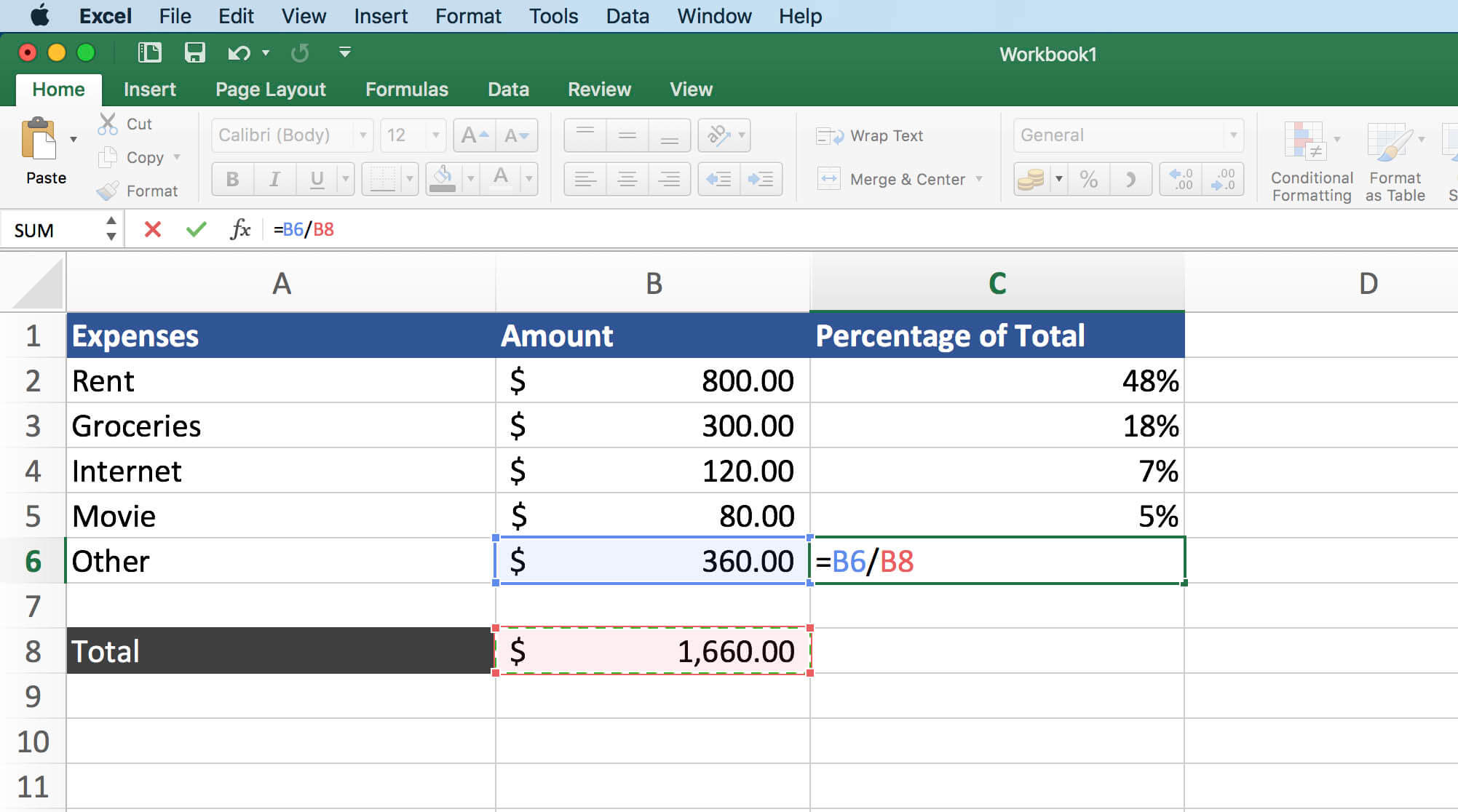


In this case, the percentage formula will be similar to the one we’ve just discussed. The Total is at the End of the Table/Column in a Certain CellĪ very common scenario is when you have a total in a single cell at the end of a table. Now, let’s investigate a few more examples that will help you quickly calculate a percent of a total in Excel on different data sets. The example we just saw in the previous section is one of the several ways to calculate percentages of a total. Alternatively, you can use the keyboard shortcut Ctrl + Shift + % to enable the percentage format.Ĭalculating the Percentage of the Total in Excel The same sequence of steps shall be performed when using any other percentage formula in Excel.

Remember to increase the number of decimal places if needed. If you want Excel to automatically add the percent sign and transform the decimal into a percentage, you have to adjust the following settings first:Ĭlick the Percent Style button (Home tab > Number group) to display the resulting decimal numbers as percentages either for a single cell, a range of cells, or an entire column or row. In column D, the percentage of Delivered Items is represented in Decimals. This is how an Excel spreadsheet calculates Percentages without formatting. Excel will automatically add the formula as you enter more data in columns B and C. Next, copy it down or double-click the bottom right corner of the cell (in this case: D2). To find out the percentage of delivered products, in column D, perform the following steps: The quantity of individual products that the store orders are in column B, and the quantity of individual products that the store delivers in is column C. Let’s look at a practical example of how percentages are calculated in Excel:Īn online store uses a spreadsheet of ordered and delivered products to track its inventory. When calculating percent in Excel, you do not have to multiply the resulting fraction by 100 since Excel does this automatically whenever the Percentage format is applied to a cell. If you compare it to the basic math formula for a percentage, you will notice that Excel’s percentage formula lacks the “ *100” part. The basic formula to calculate a percentage in Excel is: This includes a percentage increase formula, a formula to get percentages of the total, and many more. So, let us see a few simple formulas for calculating percentages in Excel. If you ask someone – “Which percent formula do I use to get the result I want?”, most likely, you will get the answer – “Well, that depends on what result you want to achieve.” Regrettably, there is no universal Excel formula for percentages that would cover all possible scenarios. Computing percentage in Microsoft Excel is even easier since Excel performs most of the operations for you automatically in the background. This is how you normally calculate percentages in school and everyday life. The basic percentage formula is as follows:įor example, if you had 20 apples and you gave 5 to your friends, how much did you give, percentage-wise? By performing a simple calculation =5/20*100, you get the answer of 25%. The term “per cent” is derived from the Latin word per centum, which means “by the hundred.” As you probably remember from your high school math class, a percentage is a fraction that is calculated by dividing the numerator by the denominator and multiplying the result by 100. In this post, we are going to learn some basic techniques that will help you efficiently calculate percentages in Excel.
#Figuring percentages excel how to#
How to Increase/Decrease a Number by Percentage?.Example 3: In Case you are given the List Price after Various Discounts.

Calculate the Total by Amount and Percentage Calculate the Amount by Total and Percentage Calculating the Amount and Total by the Percentage.Calculating Percentage Change Between Rows Calculating Percent Change Between 2 Columns How to Calculate Percent Change in Excel (Percent Increase/Decrease)?.The Total is at the End of the Table/Column in a Certain Cell Calculating the Percentage of the Total in Excel.


 0 kommentar(er)
0 kommentar(er)
